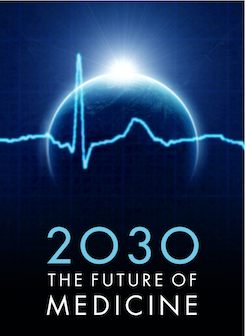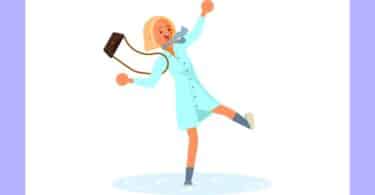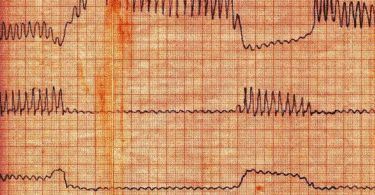
People in Glass Houses
For over two centuries Homeopathy-bashing has served both as a hobby and a life-support to many who have lived on the pickings of the allopathic-pharmaceutical complex. While The Guardian congratulates itself for winning the Pulitzer, the Prize itself is not above controversy. The Chicago Tribune, a leading America newspaper opines that the Pulitzer Prize is nothing more than a ‘mutual admiration society’ and not to be taken seriously [1]. Also, the Prize is not without bias. The 2010 Pulitzer Prize Winner for Commentary, Kathleen Parker candidly admitted, “It’s only because I’m a conservative-basher that I’m now recognized”[2].
Let us take a look at the members of the Homeopathic Working Committee of NHMRC which prepared the report. Of the seven members, only one member, Prof. Peter Brooks MBBS, MD, had a background in Complementary and Alternative Medicine. Dr. Brooks was “required to step down” from the Chairmanship of HWC, because he had in the past been associated with establishing the Australian Centre for Complementary Medicine Education and Research at the University of Queensland, in association with Southern Cross University. All discussions were purported to be “robust and open”, yet ironically decision-making was majority-based, with no reference to dissent – thus ensuring that any sane voice would be drowned in the din of a motivated majority [3].
Turning a Blind Eye
The report also admits that it did not consider any evidence from (a) laboratory studies, (b) studies in animals, (c) studies in humans without a specific health condition; nor did it focus on the safety of homeopathic medicines. It did not take into consideration any personal testimonials as the HWC opined that they are not reliable as people may experience health benefits because they “believe that a treatment is effective”. So they relied on evidence based methods, in particular the Randomized Controlled Trials (RCTs) as they are claimed to be the “gold standard” for testing medical efficacy. For that reason NHMRC did not consider observational studies, individual experiences and testimonials, case series and reports, or research that was not done using standard methods [3]. This is quite strange because traditionally, surgeons have relied principally on three types of research: animal experiments, case reports and case series [4].
This only exposes the fact that the august Committee seemed to be unaware of “Single Case Experiments” as an important source of evidence [5].
According to NHMRC Chief Executive Officer professor Warwick Anderson, “All medical treatments and interventions should be underpinned by reliable evidence”. So what “evidence” is Prof. Anderson talking about? Obviously, he is referring to RCTs. Back in the 1960s and 1970s, Archibald Cochrane advocated for the utility of RCTs to sort the wheat from chaff. And soon people were referring to RCTs as the “gold standard” and anything that did not meet up to its scientific rigor was supposed to be deceit, chicanery and smacked of charlatanism – fit to be burned at the stake or lynched in the print (or digital) media.
Questioning RCTs not blasphemous anymore
However, in recent times, even such respected and conservative (and not-so-well-disposed-to-Homeopathy) journals such as The Lancet have been questioning the faith placed in RCTs and pointing to its serious limitations. One scholar admits that, “RCTs most often lack evidence that the treatment under investigation will prove of any use to a real patient seen by a doctor in the clinic [6]. The ritualistic worship of RCTs comes in for critical comment in a McGill University paper which concludes that, “the legitimacy of Evidence Based Medicine relies neither on experts nor numbers, but on distinct procedures for handling (non) Evidence, reflecting its ‘regulatory objectivity’”[7]. In a textbook on RCTs, Jadad and Enkin admonish us “to stop worshiping the randomized controlled trial as if it were a talisman that would guarantee objectivity”. As early as 1998, Rene Favaloro, the father of coronary artery bypass surgery (CABG) had warned against the “almost religious sanctification” of the ideology of RCTs [4].That is so because RCTs do a good job to solve simple or complicated problems, but have very limited use in complex problems like human health and well-being. To cite an example, raising a child and treating dementia would hardly lend itself to RCTs [8].
In its wisdom NHMRC chose to turn a blind eye to these realities.
Possible cause of bigotry against Homeopathy
As a student, practitioner and teacher of Homeopathy, I have always wondered why Homeopathy, which originated in the West, is facing such difficult times in that culture (although Germany is an exception – there is no legal monopoly on the practice of medicine). If you follow debates broadcast over the media in the US and the UK (and now Australia), you will find the views against Homeopathy virtually stink of bigotry. By contrast, Homeopathy is accepted and respected in places like India, Malaysia, Sri Lanka and in most South American countries.
Is there a deeper reason for such attitudes?
One view presented by some medical anthropologists is that present day practice of biomedicine in the West has evolved in a culture dominated by monotheistic traditions of belief. Monotheism is founded on a commitment to “universal truths”, and “unitary paradigms”. This has nurtured a culture of allowing only a single-minded approach to illness and care [9]. In the countries mentioned above, the medical pluralism matches the social and religious pluralism seen in society. One will find that medicine, like religion, ethnicity and other key social institutions, is a medium through which the pluralities of social life are expressed and recreated [9]. However, institutionalized modern medical practice in these pluralistic societies is also a victim to the same “medical monotheism” of the West. Thus it will not brook an alternative concept like Homeopathy. By contrast, ethnomedicine systems, be they TCM or Ayurveda, are open to ideas, concepts and practices of modern science and work towards a synergistic relationship. In these countries practitioners of all hues will often send their patients to a Homeopath (and vice-versa) for a difficult and chronic problem which has no clear-cut cure in their system.
One of the outgrowths of this has been that the institutions of Allopathy have complete control over establishing the criteria by which Homeopathy is judged. Another area of difference that lies in the world view of Allopathy is its insistence on questioning the grounds of knowledge within the present frame of knowledge. If Life Force cannot be measured, weighed or imaged, it is ridiculed to be non-existent. Similarly, therapeutic efficacy is measured only on the basis of RCTs and not by any other method.
But Homeopathy is not the only victim of this social order. Even within the practice of modern medicine, there is a tacitly approved caste system. Psychiatry, internal medicine, pediatrics and the like are viewed as the “soft” side of practice and the real “hard core” medicine is surgery. The “soft” specialties provide low incomes and attract more women practitioners, while the “hard” specialties pay more and command more respect. Perhaps that is one reason why some soft specialties like dermatology (internal medicine) have added surgery to their practices [9].
Given these realities, where do you think a homeopath giving sugary pills stands in the hierarchy?
Hope of a brighter future
In the light of what has been said above, it is foreseen that RCTs will lose their importance in the years to come. Researchers are now developing new methodologies to extract information from patient records and databases. Single-case studies are gaining ground. It is believed this will lead to a new form of personalized evaluation – one that will take into account the idiosyncrasies of patients, their genetic predispositions and similar individualizing factors. This may one day evolve into a new standard to evaluate Homeopathy which is all about individualization. But our culture’s anthropological baggage of insisting on doing medicine only one way may have to wait for some historical singularity – an event which will break the ivory towers of allopathic arrogance. Even today we have evidence of the memory of water and a quantum mechanics based paradigm of Patient-Practitioner-Remedy matrix developed by Lionel Milgrom that has not been contested. But the main stumbling block is the cultural outlook. Communism, caste-system, slavery, imperialism and many more dogmas and practices had their day, only to be swept away by the winds of liberal change.
Eventually Homeopathy will bring medicine home – to heal the sick.
References:
[1] Reardon, Patrick T (June 8, 1997). “A Parade of Pulitzers”. Chicago Tribune.
[2] Hagey, Keach (October 4, 2010). “Kathleen Parker: ‘Smallish-town girl’ hits cable”.Politico.
[3] National Health and Medical Research Council. 2015 Administrative Report: NHMRC Advice on the effectiveness of homeopathy for treating health conditions. Canberra: National Health and Medical Research Council; 2015 (Online version: www.nhmrc.gov.au/guidelines-publications/cam02).
[4] Jones, DS: Vision of a Cure, Science and the American Century: Readings from “Isis”, edited by Sally Gregory Kohlstedt, David Kaiser, University of Chicago Press, 2013.
[5] Kazdin, A.E : Single-Case Research Designs: Methods for Clinical and Applied Settings, 2nd edition. New York: Oxford University Press, 2010
[6] Rothwell PM: External validity of randomized controlled trials: “To whom do the results of this trial apply?”. Lancet 2005; 365: 82–9
[7] Knappen L: Being evidence based in the absence of evidence: The management of non-evidence in guideline development. Social Studies of ScienceOctober 2013, vol. 43 no. 5 pp. 681-706
[8] Jadad AR & Enkin MW: Randomized Controlled Trials: Questions, Answers and Musings, second edition, BMJ Books/Blackwell Publishing; 2007
[9] Kleinman A: What Is Specific to Biomedicine? In: Writing at the margin: Discourse between Anthropology and Medicine. Berkeley: University of California Press, 1995: 21–40.




Very good and attacking article. Now we have to stack those who malign homeopathy.
I don’t agree with the stand point taken here.
We can argue that Homeopathy cannot be proven by RCT alone. But to argue that RCT is biased is entirely something else.
It would have been better if we create one standard of our own and present it to the world scientific community for reviews and errors and prove homeopathy using the same standard.
The author is not “arguing” against RCTs – he is only referring to its serious limitations as pointed out by the quoted references (all reputed allopathic authorities). Indeed, as a renowned clinician and writer Murray Longmore puts it, “A big well planned trial may be worth centuries of uncritical medical practice, but a week’s experience on the wards may prove more valuable than years reading medical journals”.
That is exactly what Hahnemann did when he questioned centuries old medical practices and cared to observe and infer from his pathological trials, or prüfungen, as he called them. Yes, Homeopathy needs to develop its own protocols. There is no argument about that.
Having spent 30+ years in allopathic drug development, I understand the value of RCTs for allopathic drugs because in that scenario one size fits all. It is the same indication to be treated, and the same chemistry to be affected the same way in each patient. However, to judge efficacy of homeopathy by the same methodology would be completely wrong. It demonstrates the obvious miss understanding of the basic principles of homeopathy by allopathic science. I am currently a student of homeopathy and find it very fascinating how homeopathic remedies are able to utilize body’s own systems to balance body’s chemistry which has become ill tuned for disease or any other reason. I have myself witnessed several cases where allopathic medicine had failed but homeopathic remedy proved to be much more efficacious. The trouble is today’s science is not able to explain the basis of homeopathic remedies’s efficacy. It is beyond TODAY’s science to explain why a homeopathic remedy works (with no chemicals in it!!!!!). May be 100+ more years from now, the science will be more advanced to be able to explain and then perhaps there would be less skepticism of homeopathic treatments. Just as in the past (few hundred years ago) it was hard to believe that our earth is circular and not flat until science advanced enough.
I read the article “The Future of Medicine and the Medicine of the Future” – a well analyzed presentation, with much food for thought. Main stream health ‘industry’ with all its mighty research funds, is controlled by allopathy ; allopathy largely views alternate medicines as villains putting a spanner in their works; instead of developing collaborative works for the highest good of human health and well-being, allopathy looks at alternative medicines with a spirit of competition adversely affecting their market share! How sad!
Medicine is big business. Big business is big money. What else can we expect from a medical world largely commercially motivated?
Time has come to develop an integrated approach to the entire body of all health practices by developing evaluation methodologies honoring the unique nature of each practice.
In today’s globalized world, NHMRC is indeed in a vantage position to take that initiative for the highest good of humanity.
N.Kumar
One point often overlooked in any discussion on RCTs is the fact that drug developing organizations are not under any obligation to disclose ALL the trial data on which the faith of RCTs rests. To quote an example, a recent editorial of the British Medical Journal (The BMJ, 25 June 2015) laments that Tamiflu (anti-viral ’flu drug), statins (anti-cholesterol drugs) and Alteplase (anti-ischaemic stroke drug) have been on the market for a long time after so-called “satisfactory” RCTs which did not reveal known patient-level data of adverse effects and events. The editorial goes so far as to say that the state of affairs is, “Endangering the public’s trust in science, without which doctors may as well pack up and go home”.
To quote an example, in the case of Tamiflu in the UK, the manufacturer provided the licensing body MHRA with only 15 out of 74 trials they had conducted. The results of the remaining 59 were withheld. Ben Goldacre, one of the founders of AllTrials, (an organization that advocates that all medical research must be open research) (http://www.alltrials.net/) explains very succinctly that in clinical trials, “The simplest strategy to get the answer you want is simply this: run lots of trials, which will have a range of results due to the inevitable play of chance, but bury the unflattering results, and publish only the good ones. This practice is still entirely legal, and very common, even though it is clearly a form of research misconduct.”
A study published in the Journal of Clinical Epidemiology (Volume 68, Issue 7, 811 – 820) has found that industry-sponsored clinical trials “systematically yield favourable results for the sponsors.” Researchers looked at 319 trials with over 100 participants published in academic journals in 2011. Of the 182 trials funded by pharmaceutical companies 83% had positive results compared to 59% of trials funded by non-profit institutions.
This does not apply only to drugs. The state of affairs is of even greater concern in the case of high-risk medical devices like pacemakers, coronary stents, artificial heart valves etc. According to The BMJ (10 June 2015), only half of all the clinical trials on these high-risk medical devices are ever published in a peer-reviewed journal. Researchers found that FDA database information confirmed that about 177 clinical trials on 106 cardiovascular devices had received pre-market approval in the USA between 2000 and 2010 – of those 177 trials, only 86 (49%) had been published.
Is the gold standard beginning to rust? It would be a pity if it were to become a Golden Calf?